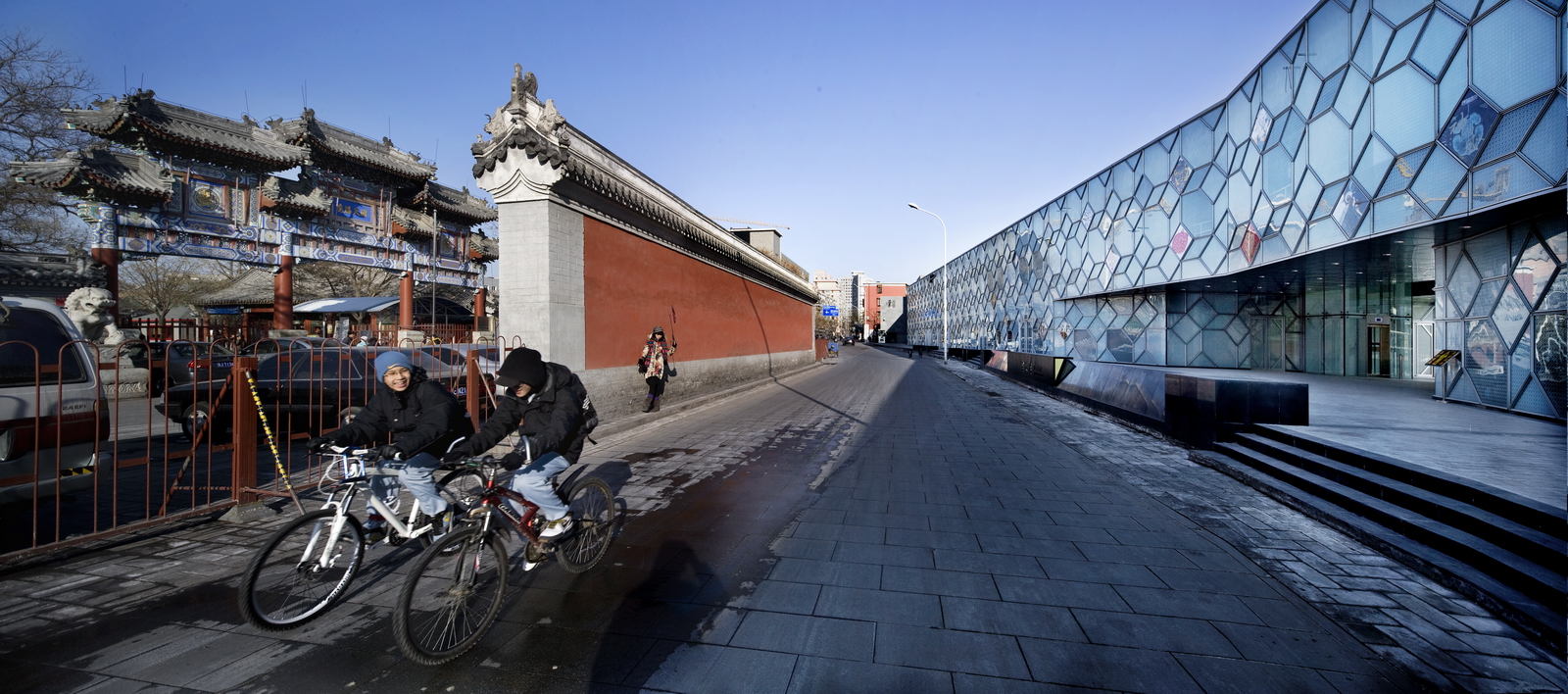Project Architect: Hao Gang, Wang Peng, Su Li Heng
Design Team: Wei Yan, Chen Chun, Liu Shuang, Kristin Klopfenstein
White Cloud Temple has played a significant role in the history of Taoism, and now serves as the seat of the China Taoism Association. Due to the city’s rapid demolition, the ancient temple lost its original context and has had to integrate itself with the new modern context of skyscrapers.
The project is located on narrow lots just on the south and west of the temple, functioning as a high-end shopping center for jewelry and jade. Before this project was developed, two-thirds of the site on the west had been planned as public green space, which posed a problem functionally for the continuity of the retails. Instead of relying on literal historicism, this project aims to integrate contemporary cultural awareness with a sense of heritage. The buildings follow two primary axes. Responding to the main axis of the temple, it is a 140-meter-long V-shaped wall. The façade is comprised of a basic unit derived from the Taoist pattern of Eight Diagrams. A sophisticated screen wall system was created, incorporating doors, windows, display panels and light boxes. This wall fuses functionality, visual beauty, and cultural heritage into an elegant seamless surface.
Public green space follows a parallel axis to the axis of the temple and helps to integrate the old temple with the modern city. Architecture should be based on careful observation of history, and full awareness of the contemporary. Thus, the project follows a similar proportion to the existing temple, and respectfully responds to the cultural and symbolic weight of this iconic landmark.
Credits:
Project Location: Beijing
Design Period: 2006-2007
Project Status: Completed
Site Area: 13,660㎡
Floor Area: 12,684㎡

